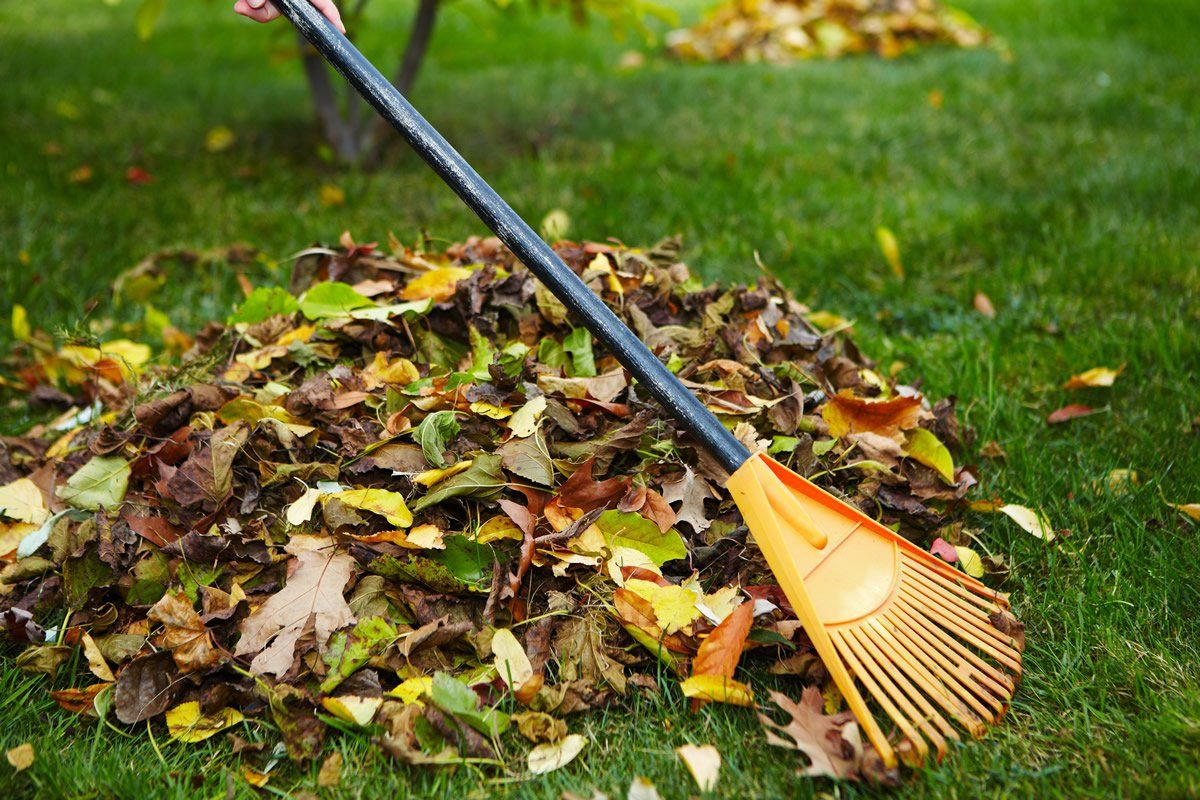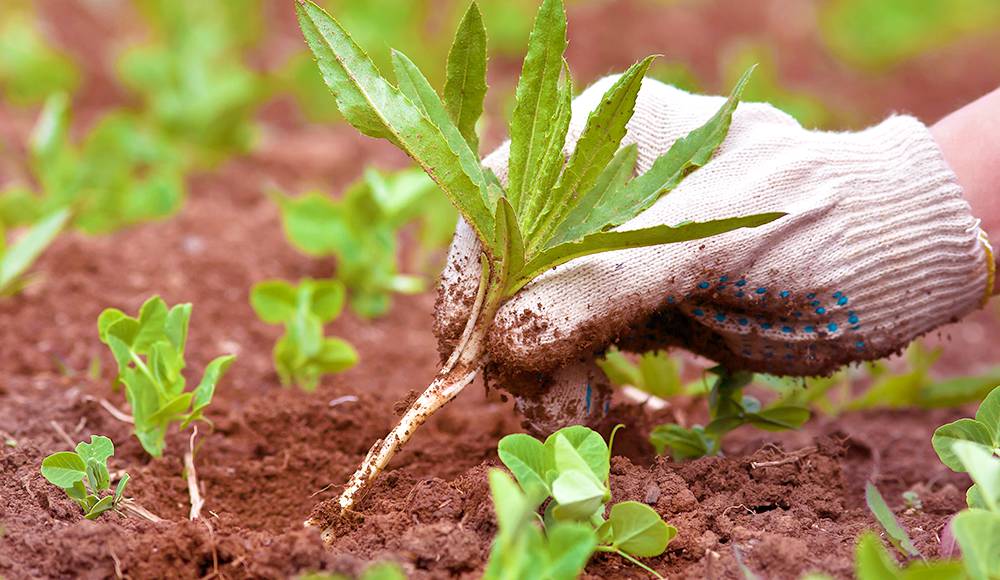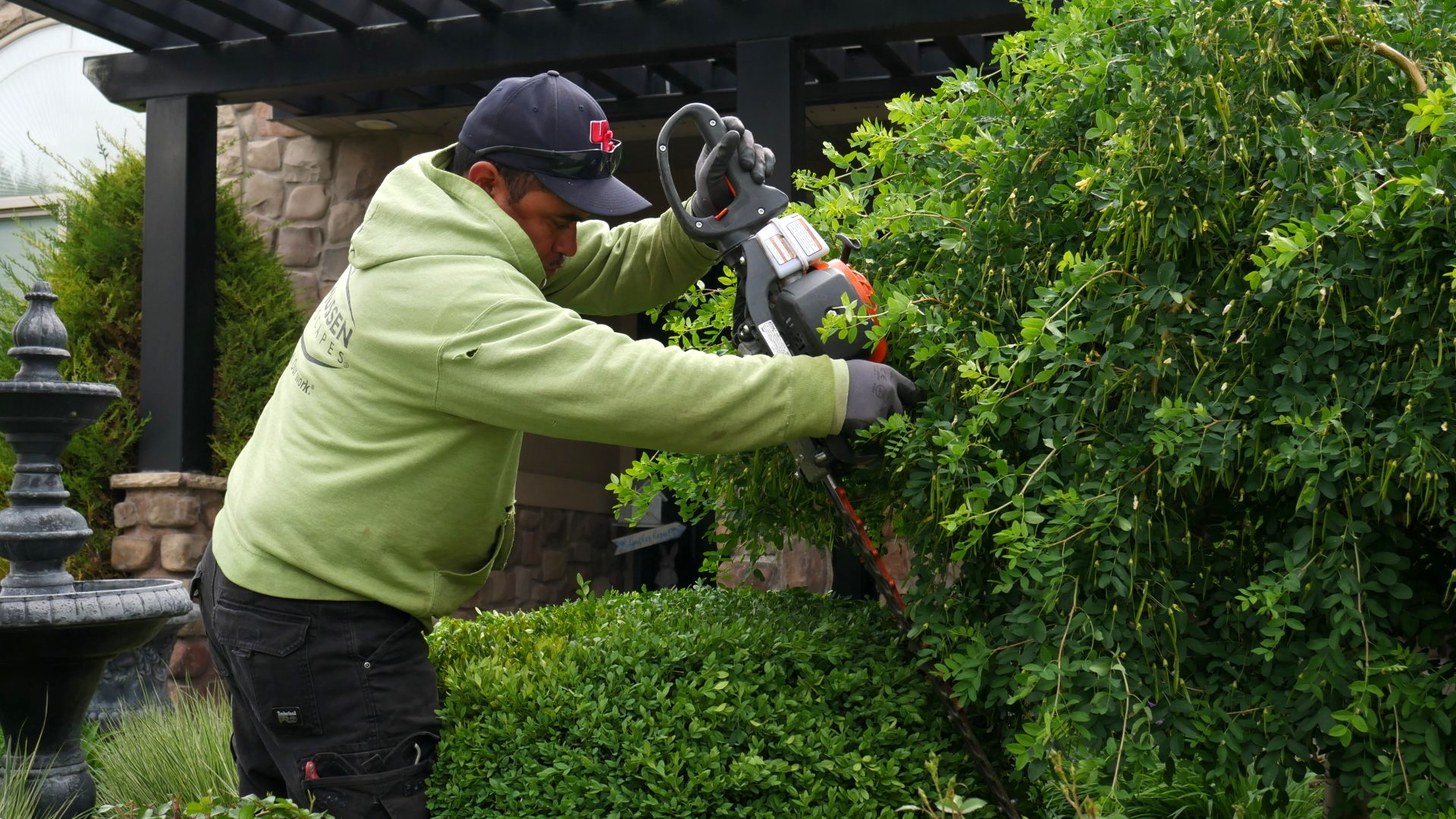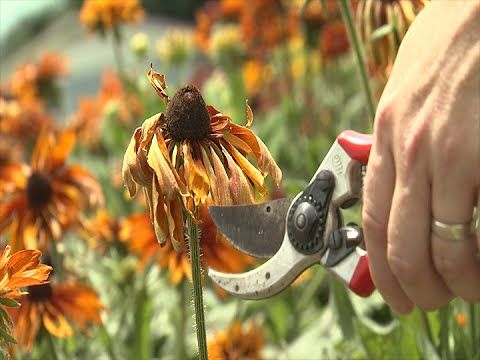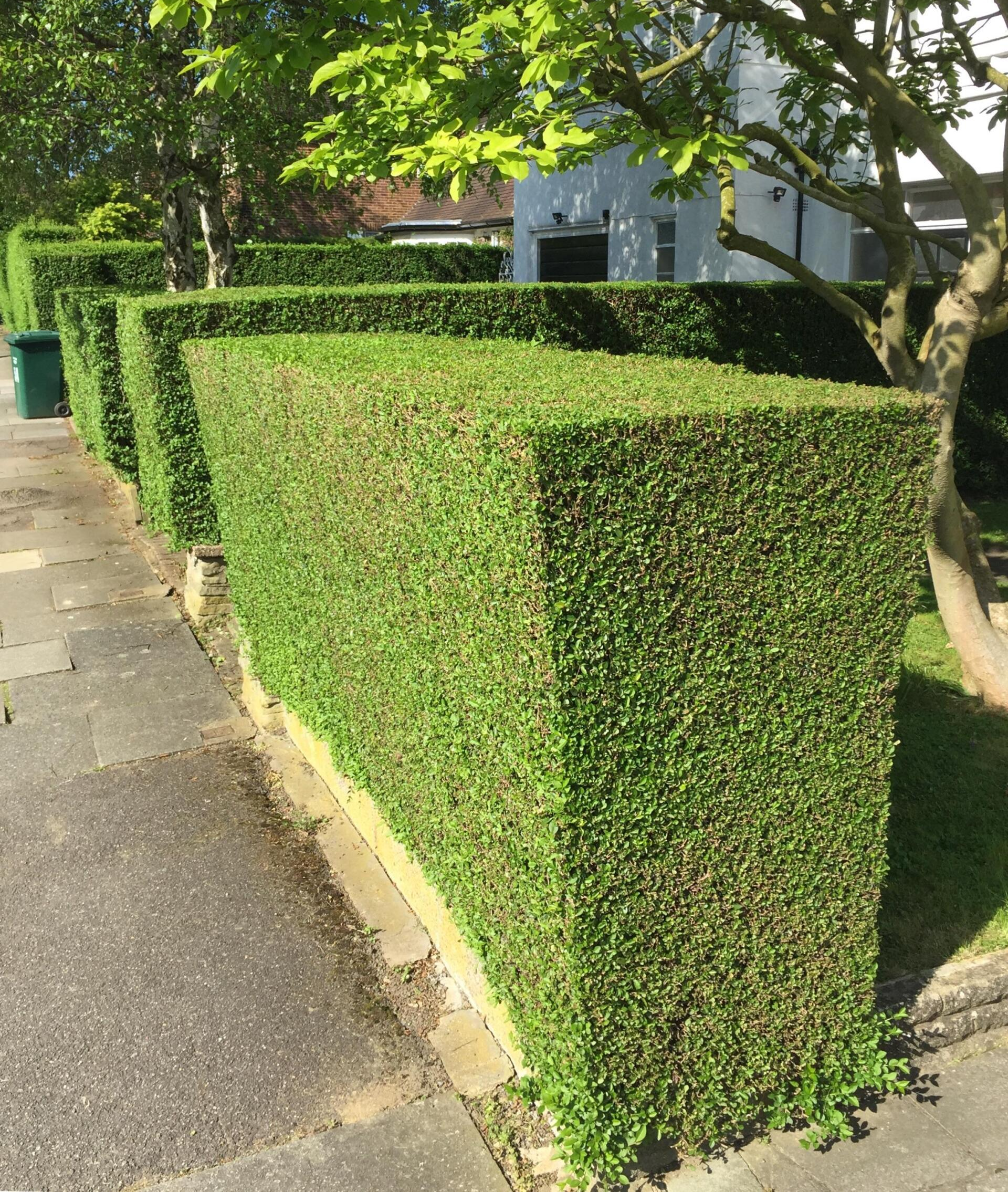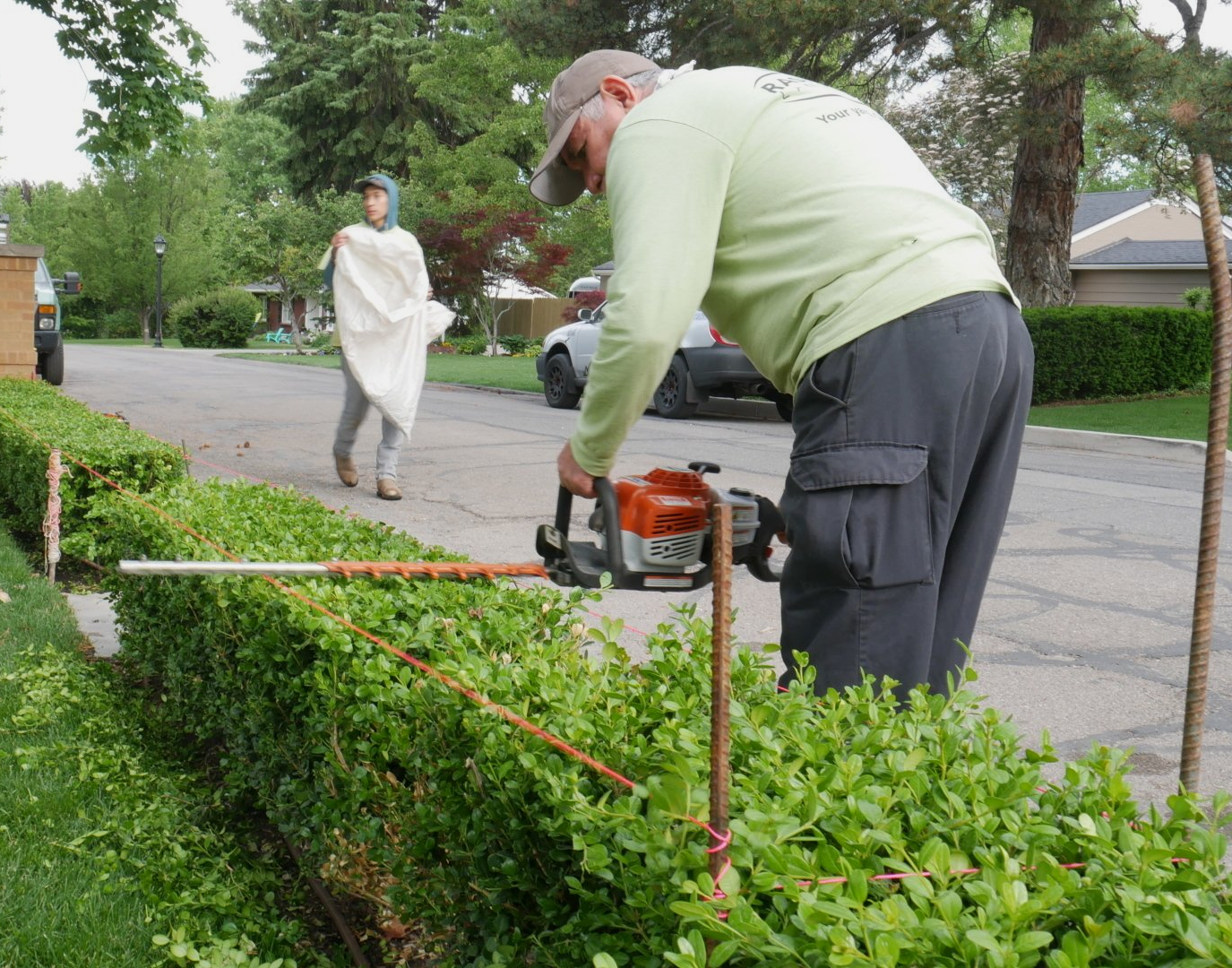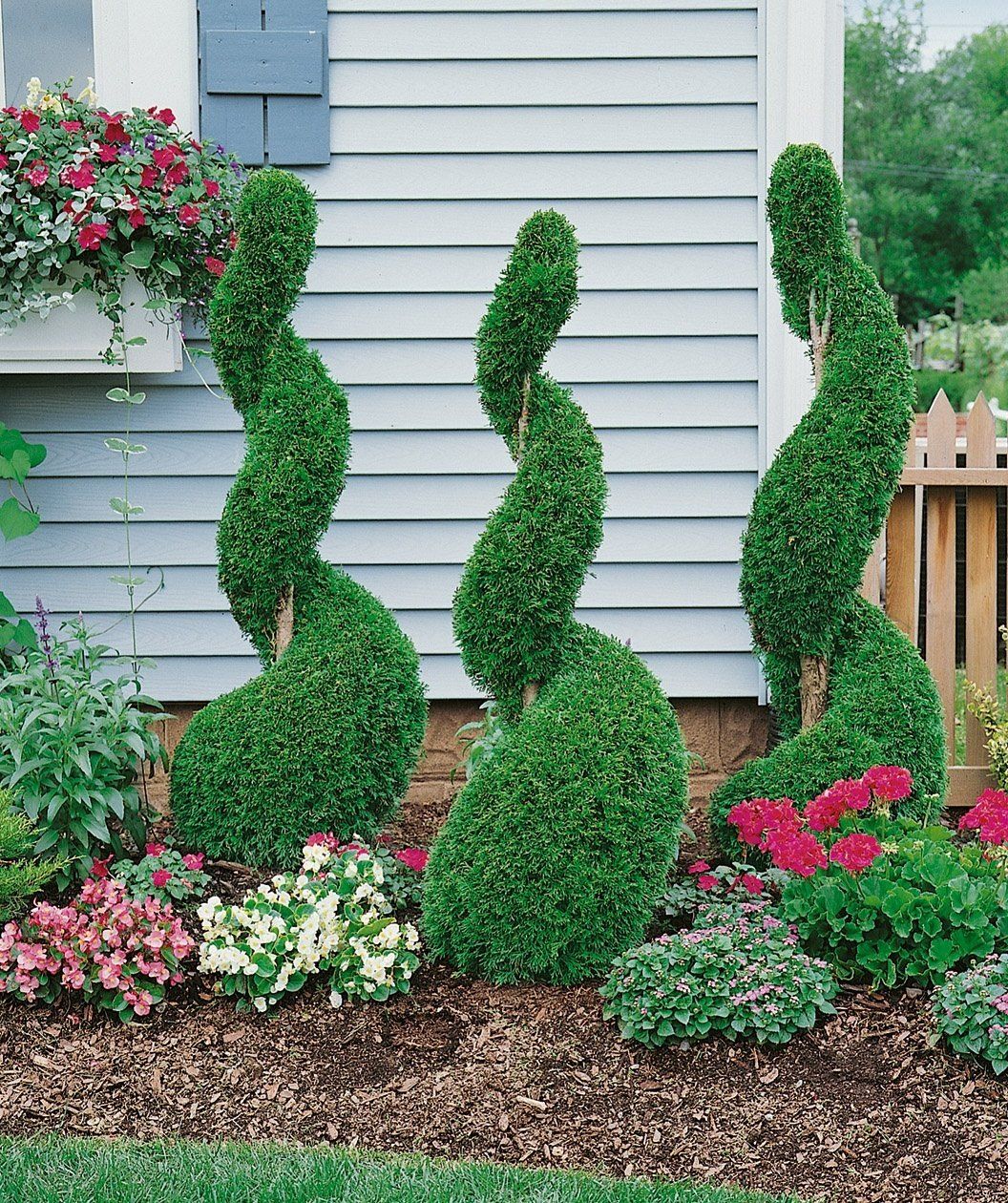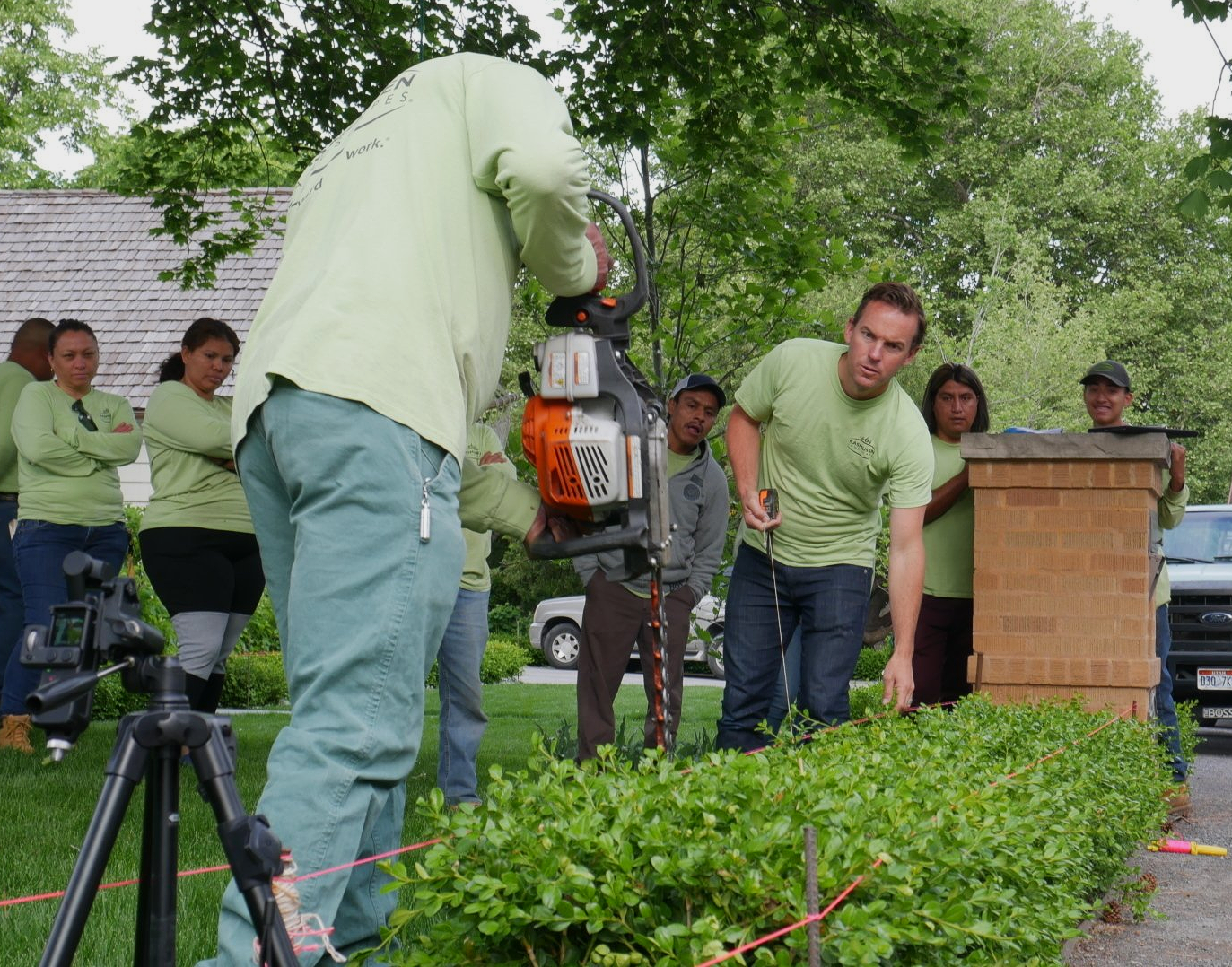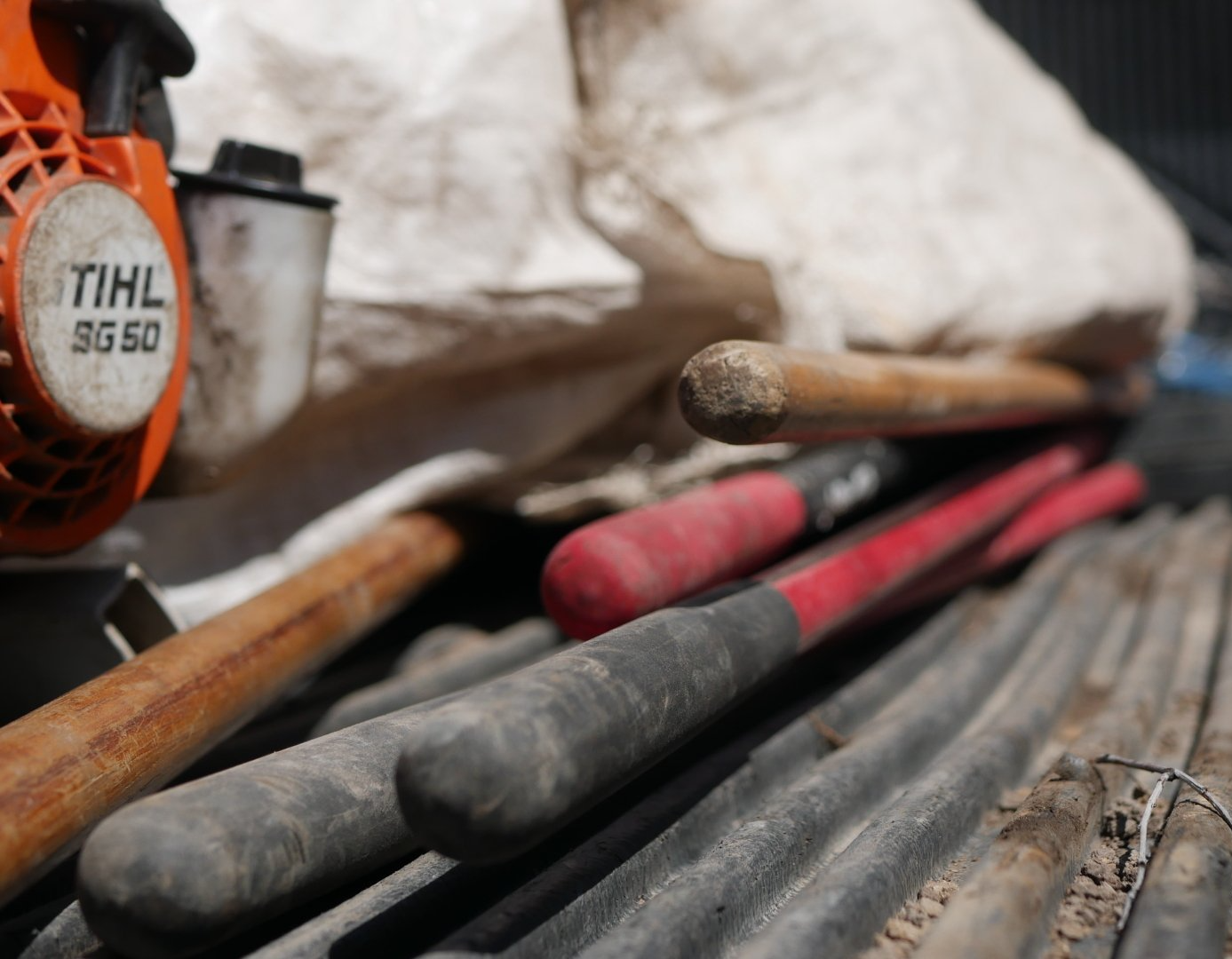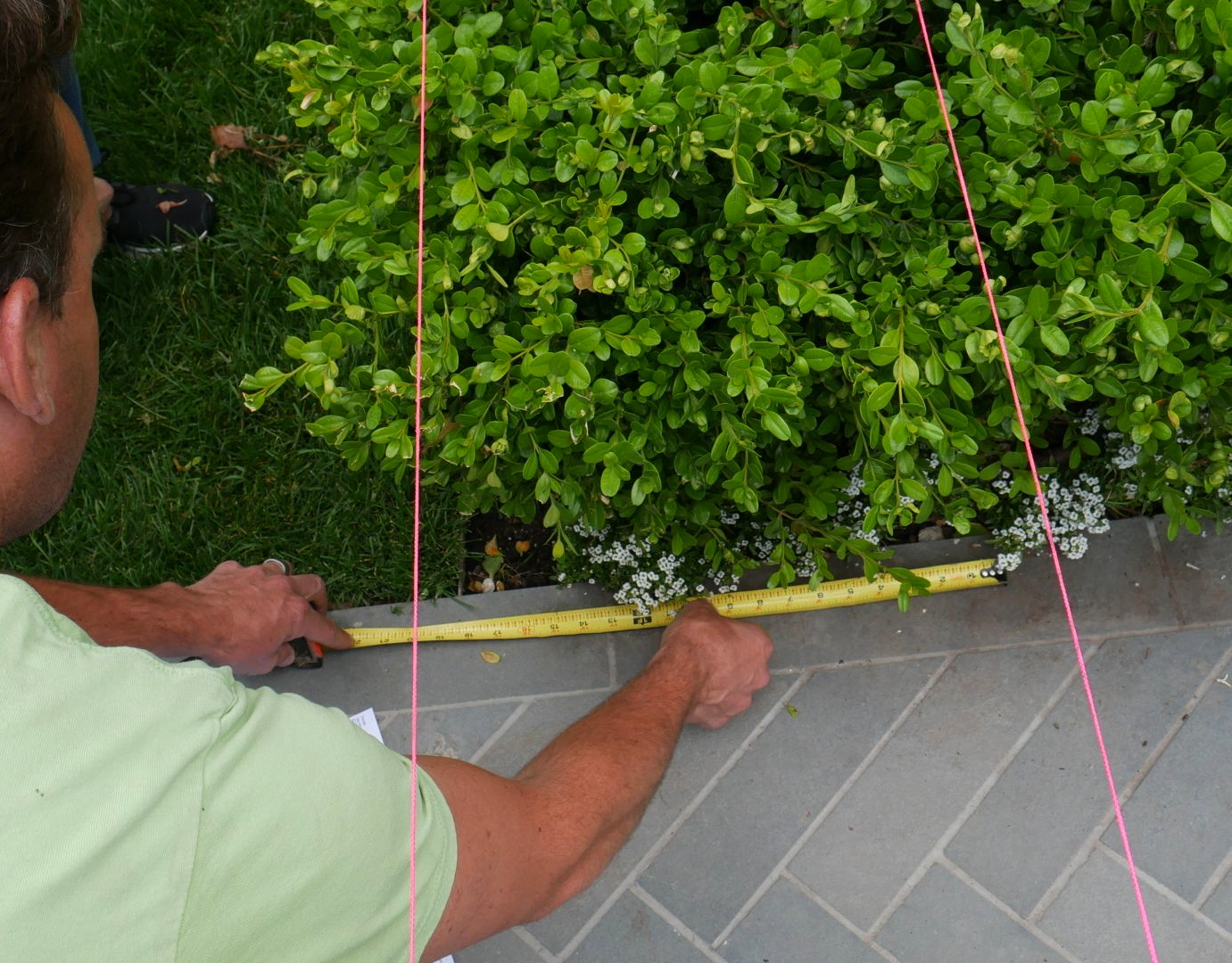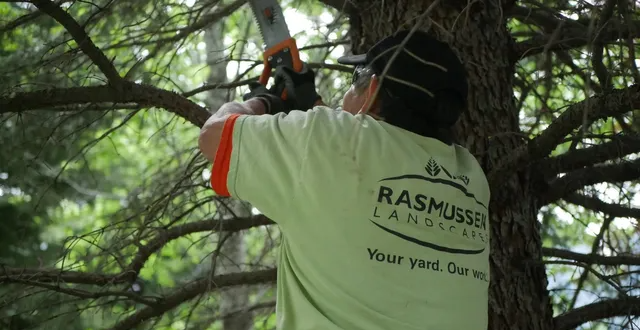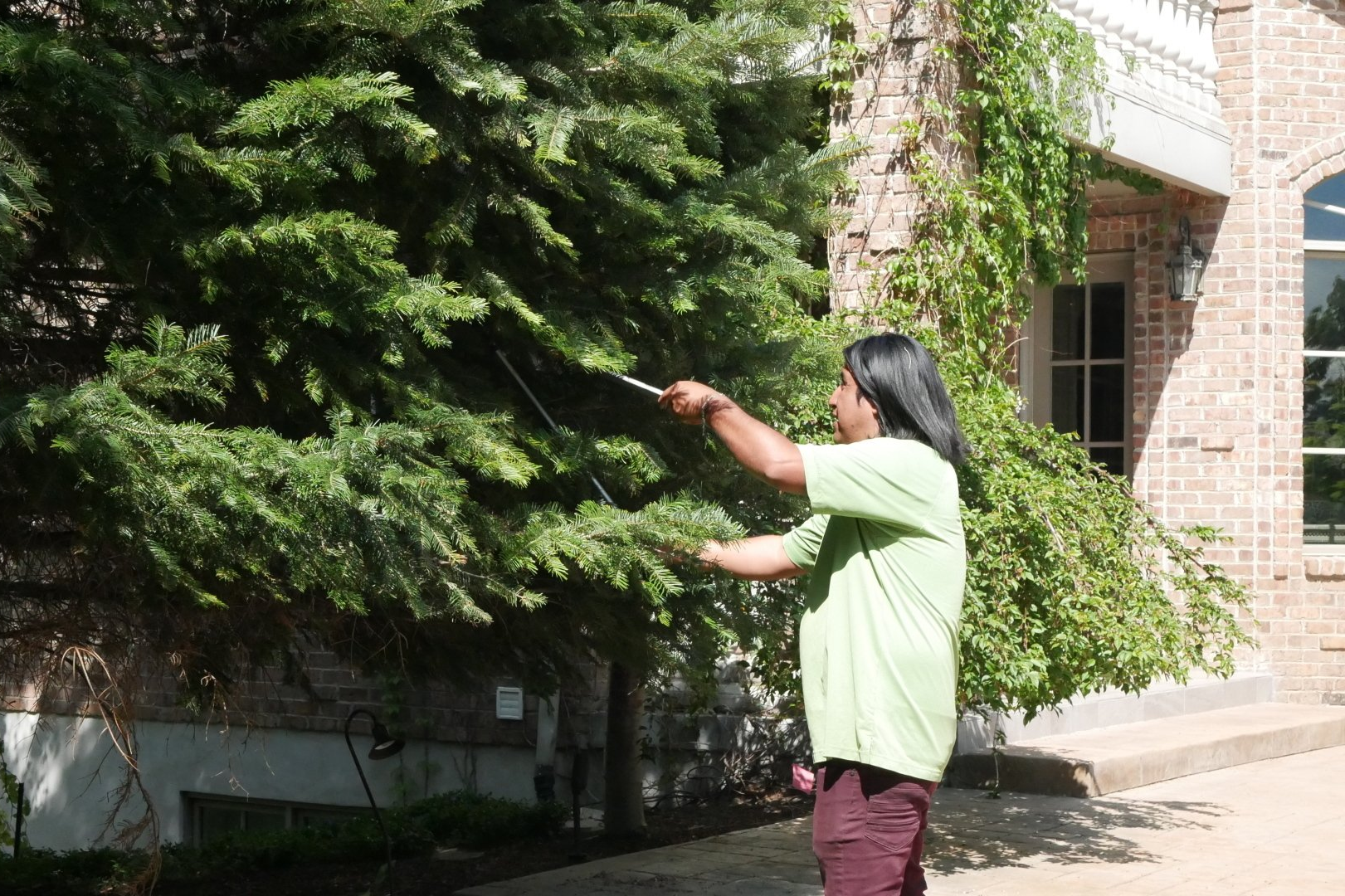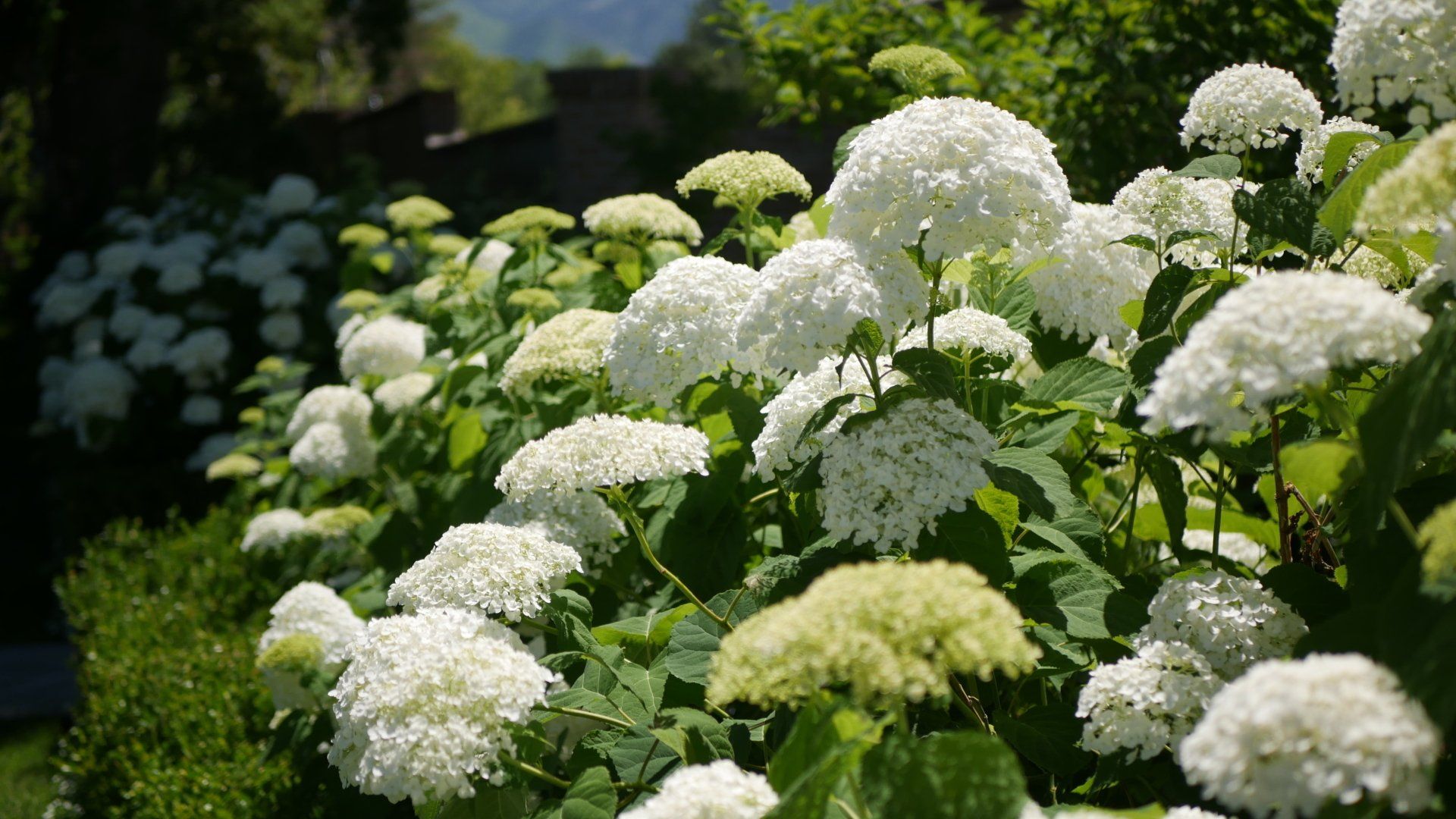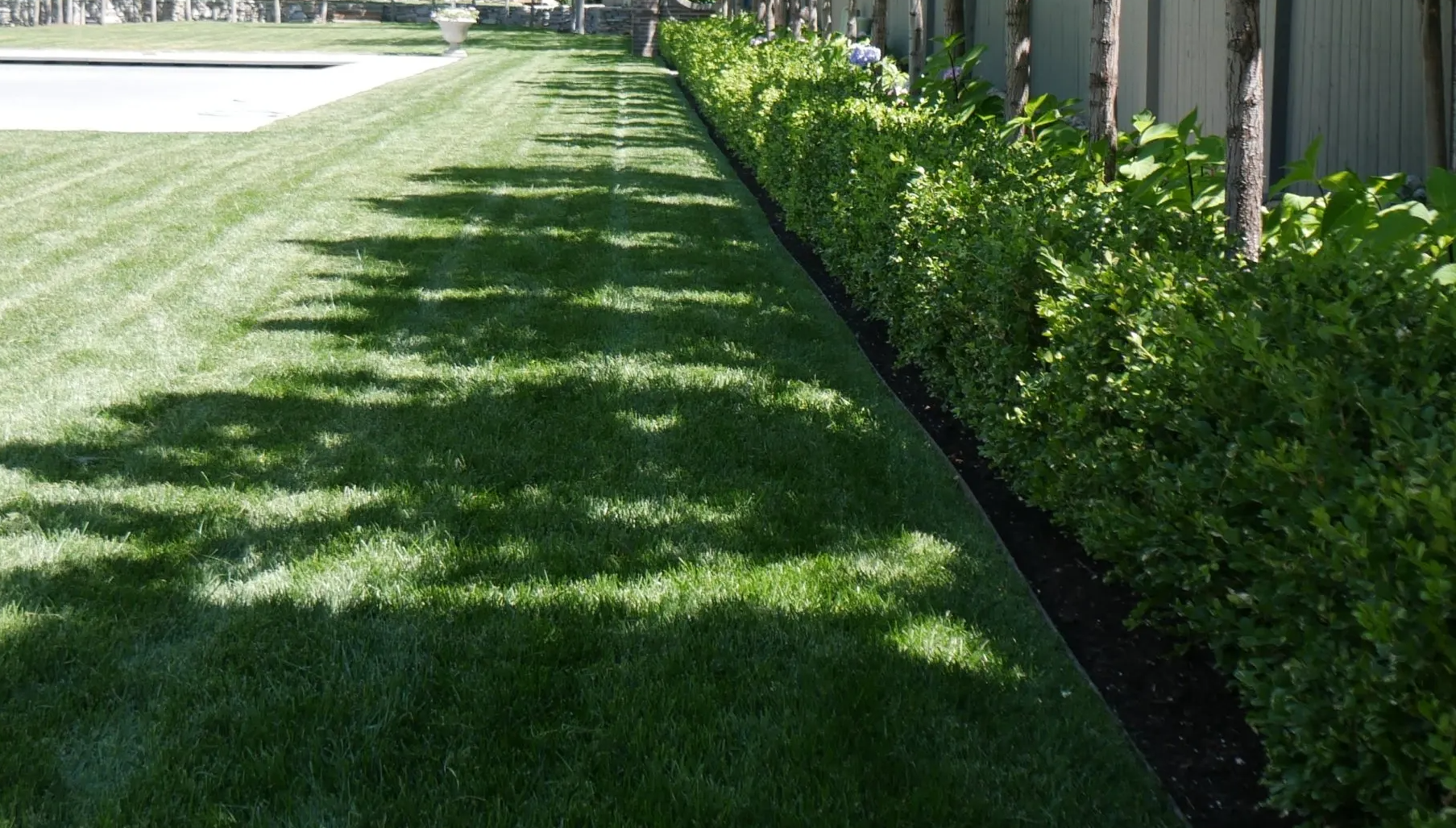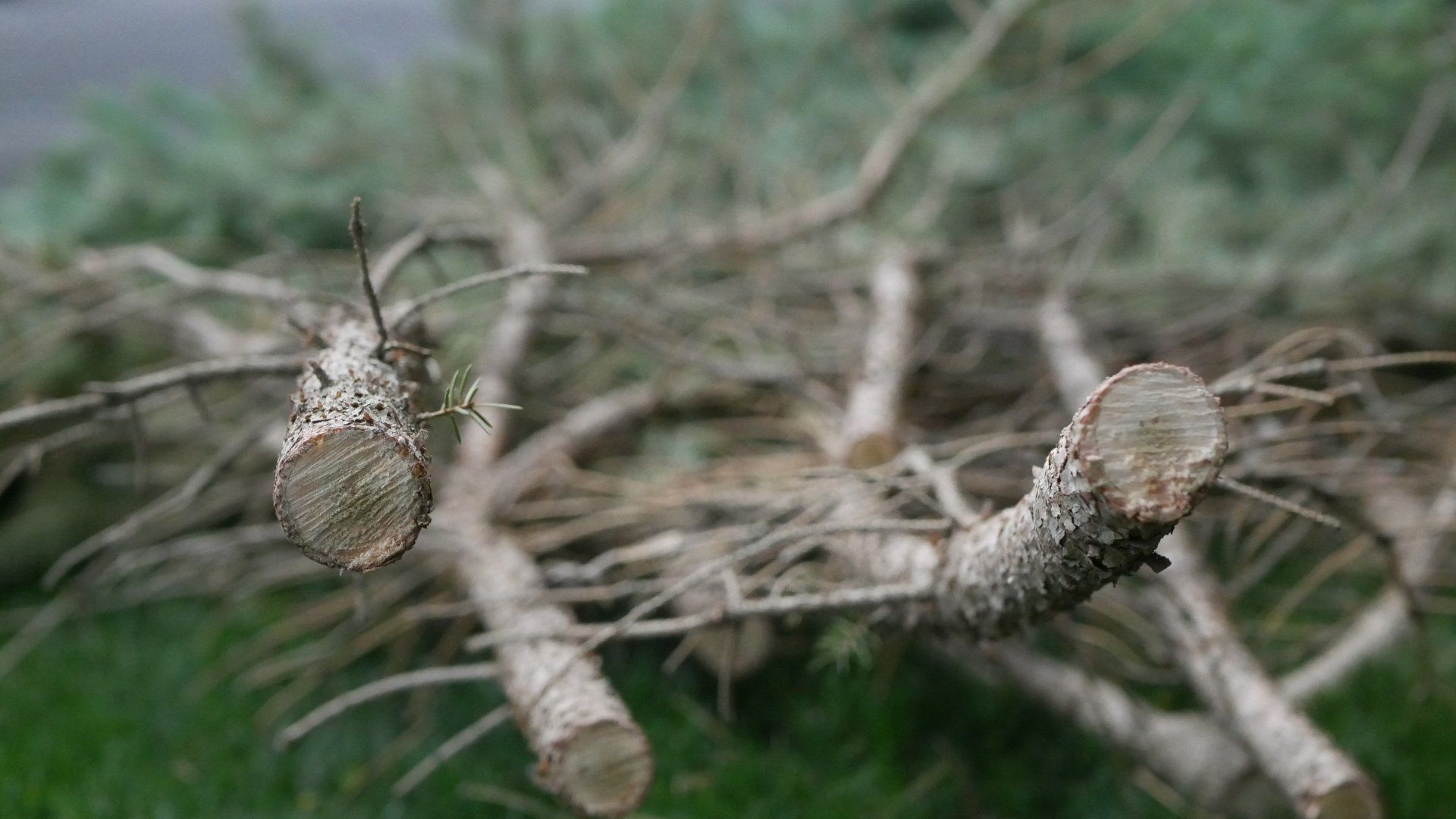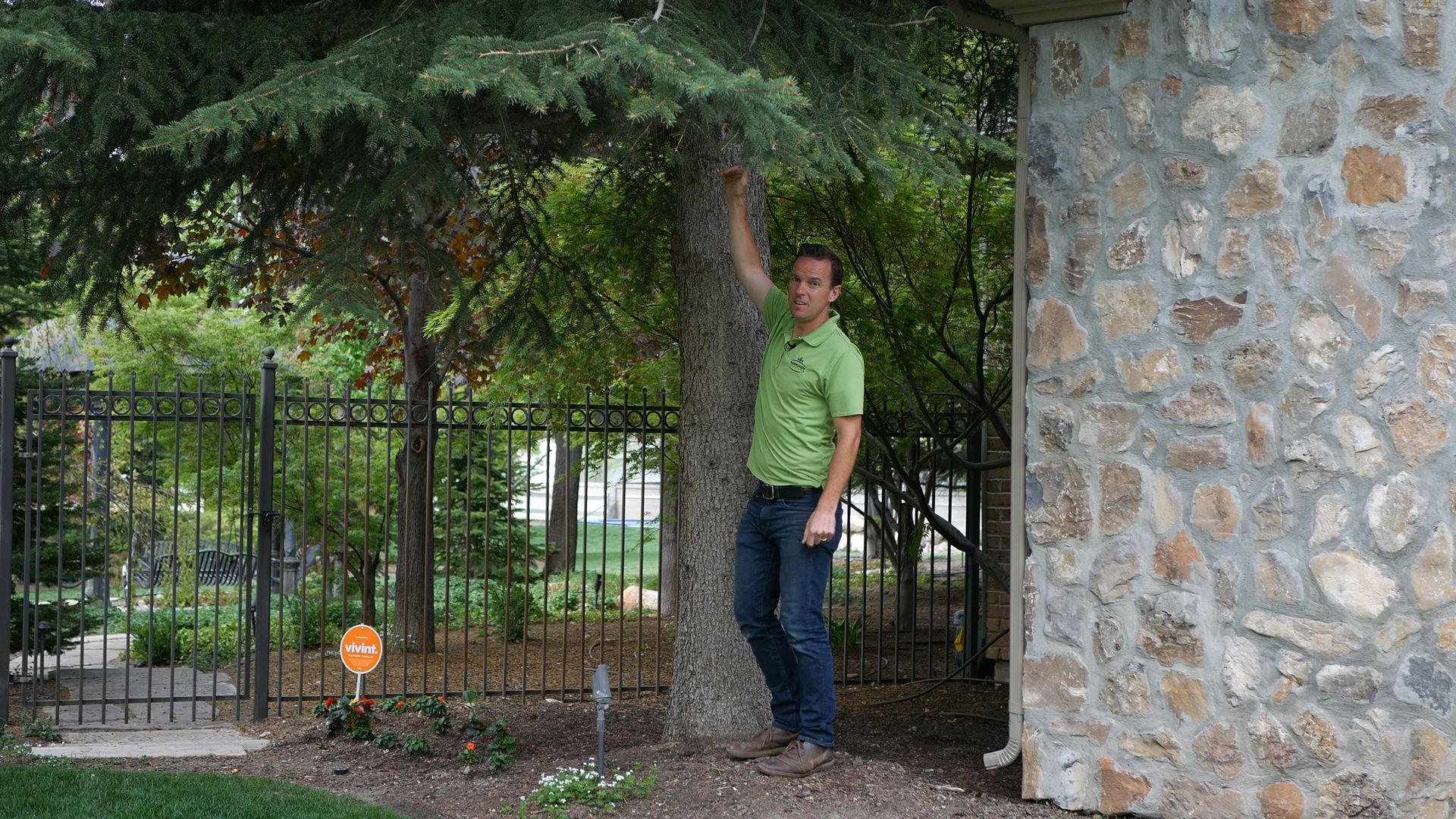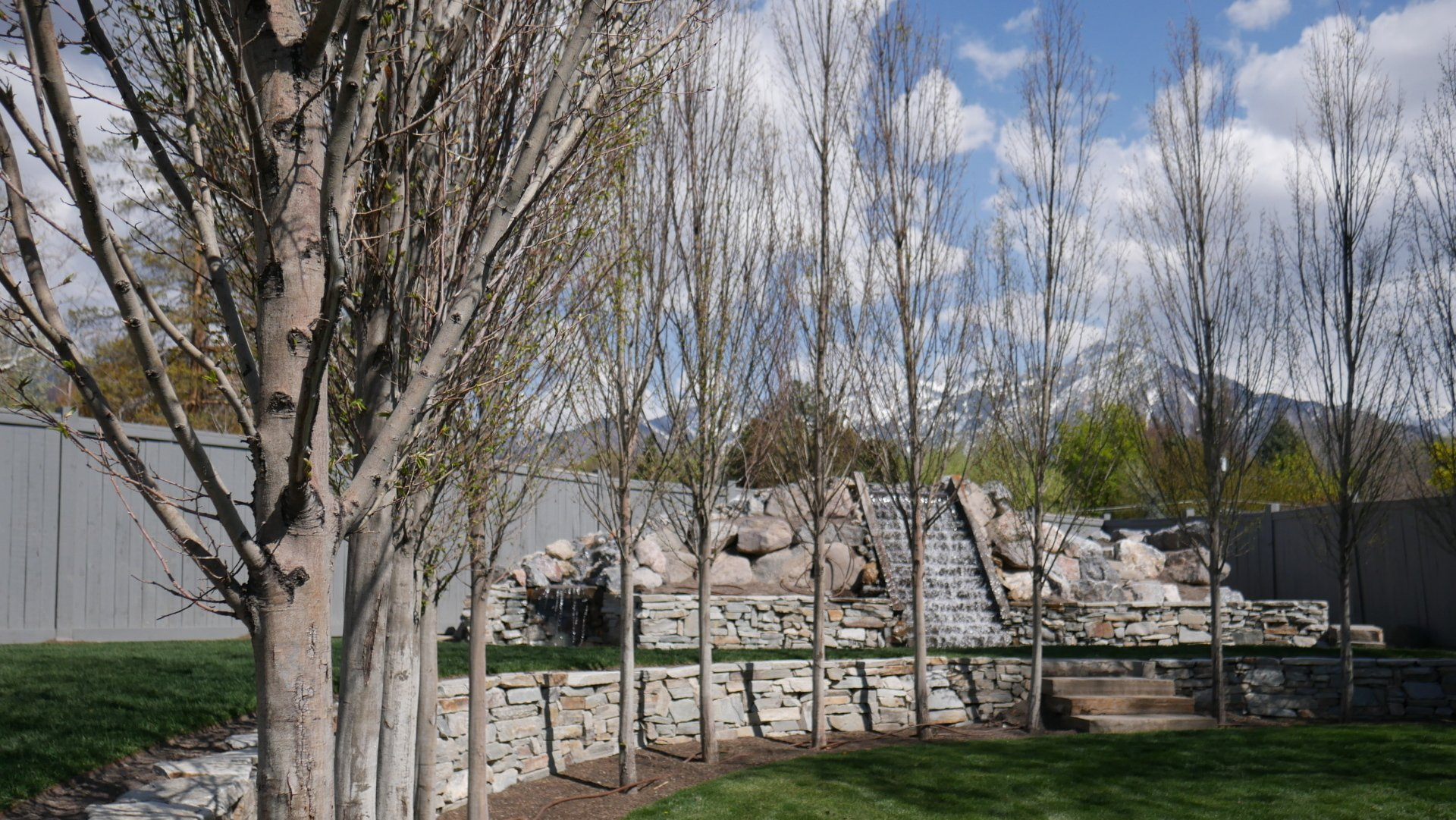Hedging & Pruning
Hedging
Hedging, or shaping, is using a hedge trimmer to shape a shrub (or bush) into a desired shape and size. The hedge trimmer, with its long and flat blade, cuts everything that comes in contact with its flat blade, leaving behind a very clean and flat surface. Hedging takes less time than pruning but requires maintenance more often to keep the lines clean and crisp. Because of the broad cutting strokes that a hedge trimmer delivers, hedging is the most common way to clean up shrubs.
Pruning
Pruning is using a hand tool to cut individual branches to achieve a more natural effect, and the look is not as clean or precise as hedging. Rather than using a machine, pruning involves cutting each branch manually, one by one, in a more time-intensive process, yet maintenance is required less often. Pruning is more commonly used for trees than for bushes, rosebushes being a notable exception. Specific plants require specialized pruning, and our crews are trained to understand these differences and how and where to prune.
Hedging
Trimming Hedges -
The Rasmussen Way
Formal Hedging-
The Rasmussen Way
The hedge trimmer was created for precision cutting of formal gardens.
The magic of hedging is in creating something interesting and clean from the natural shape of the plant. It takes a steady hand, an inventive mind, and a bit of patience to create something truly beautiful. We pride ourselves in the creative process that turns regular shrubs and bushes into an attractive feature for your yard.
Formal Hedges
Formal hedges are shrubs of the same type planted in a row to create a wall or barrier. These rows of shrubs are then trimmed uniformly to look like one plant. While formal hedges typically follow straight lines and rows, curving hedges are also possible.
Symmetry
A common feature of many formal gardens is symmetry. Hedges and shrubs are planted and cared for so that they perfectly mirror each other in size and shape. There are few things more pleasing, especially outdoors, than perfect symmetry.
Formal Hedges -
The Rasmussen Way
Skill & Training
A formal hedge should always look tight and clean, leaving no room for error. We hold regular training sessions with our enhancement crews to ensure they are always prepared to deliver the best possible service.
Equipment
It's all about having the right tools! And we never go to any job without the following:
- Measuring tape
- String-line & anchor rods
- Gas-powered hedger
- Hand trimmer
- Pruning sheers
When to Trim Hedges
Although hedges can be trimmed at any time during the non-winter months, it is recommended that hedges be trimmed three times a year. The first time to trim hedges is in early spring, right before the first big spring growth. The second time to is in the summer, after the spring growth spurt, so hedges look tidy all summer. Finally, the last time to trim is in the fall right as the final growth spurt is happening.
The reason why a fall trim is recommended is to prepare for heavy snow in the winter, when any long and protruding branches can break under the weight of the snow. An added benefit is that hedges will look much nicer once the snow clears in the late winter and early spring.
Pruning
And now, for something less formal! Pruning ensures that plants are growing in a pleasing shape and continue to look healthy. Whereas hedging is guided by a predetermined shape, pruning is governed by the needs of the plant, the surrounding environment, and by the preferences of the homeowner. It takes a practiced hand.
Reasons to Prune
There are many reasons, beyond the aesthetic, to prune plants and trees. When referring to plants, we ask homeowners to envision what all their plants will look like in the next 3, 5 and 8 years. If a plant, shrub, bush, or flowers, is meant to fill a certain space, then it needs to be cared for appropriately. Careful and regular pruning is needed to ensure that a plant stays in its intended area and produces the best results for the long term.
Another reason to prune plants is to ensure they yield desired results. Roses, for example, must be pruned and maintained in order to produce beautiful and full blossoms. Plants are genetically disposed for survival. If left alone, they will grow in a way that maximizes their own chances for reproduction and growth, so we need to coach them into being team players with the rest of the landscape.
Pruning - The Rasmussen Way
Plan
Step 1 to pruning shrubs or trees is to step back and determine the desired shape and size.
Cut
It is not enough to simply start cutting branches to add shape to a plant; the plant must still be healthy and attractive afterwards. For this reason, there are specific methods and techniques we use when shaping shrubs.
Proper Cut of Unions
This technique is used when cutting one of two bisecting branches. When a branch is large and heavy (on a mature tree), three separate cuts must be made in order avoid damaging the bark below the cut as the limb is removed. For smaller plants and trees, one cut may be sufficient.
Flush Cuts
Each cut needs to be placed correctly, and the cut itself must be done properly. Along with the this training, our crews have all the proper tools sharpened, in top condition, and at the ready.
Tree Topping
Yes, sometimes we even cut off the tops!
Specialty Pruning
Base Cut
Mature evergreens can get very large and with that come the huge base that the lateral branches can make. These lower branches cover up a lot of space and disrupt visibility. Our recommendation is to (almost) always remove these lower branches to expose the ground below, to allow people to walk under and around the tree, and to open up the visibility around the sides of the tree.
Tree Training
The purpose of training a tree is to ensure that it grows to serve its desired role. A yard tree should always look attractive, provide shade, and blend with the rest of yard.
A more serious aspect of tree training is ensuring that the tree grows in such a way as to not become a hazard in the future. When young, a bifurcated tree trunk, for example, poses no issues. But as the tree grows, these trunks become very heavy and can break off with heavy snow or in strong winds. A healthy tree is one that can withstand the elements while performing its duties. Training a tree involves leading a single limb into growing upward, while all other lateral limbs are pruned to give the tree a uniform shape.
Fruit Trees
The purpose of trimming fruit trees us to promote tree health and an abundance of fruit production. Trimming certain parts of a fruit tree gives the signal for a tree to produce fruit the following season.
Proper timing and technique for trimming fruit trees will yield amazing results. Not just in the production of fruit, but in the look and health of the tree.
